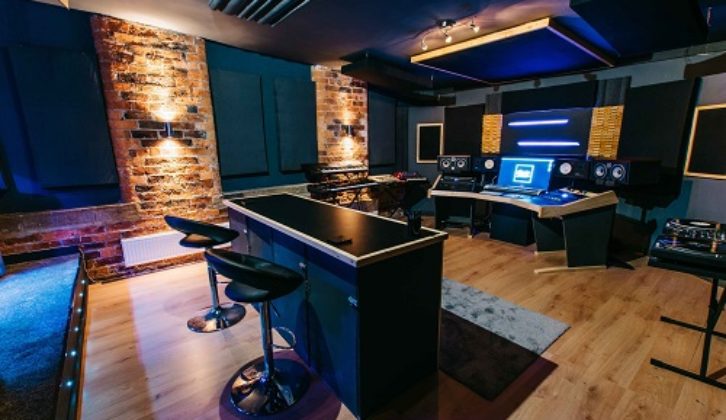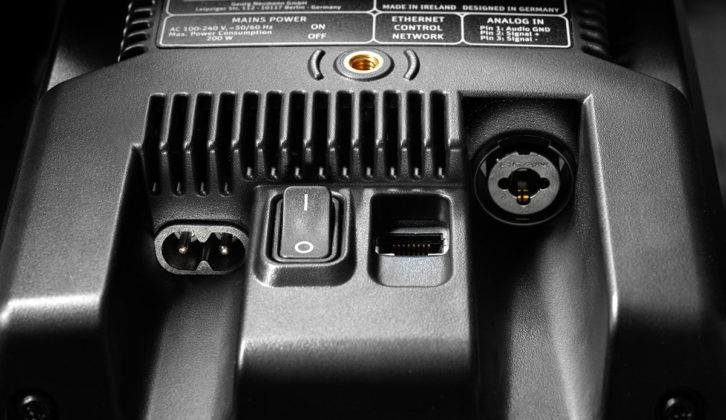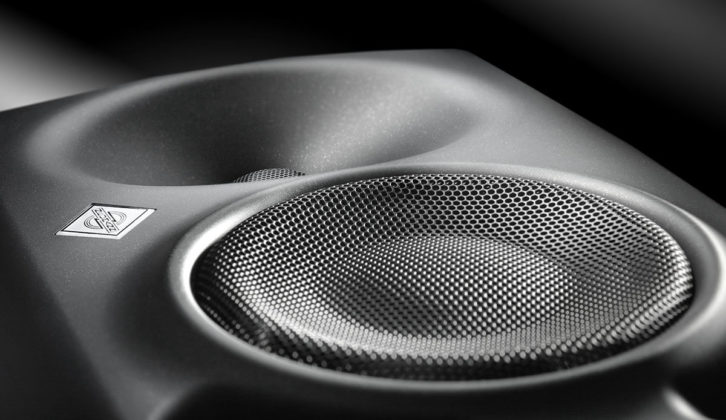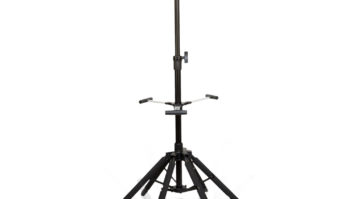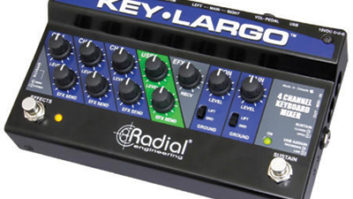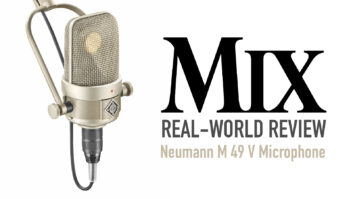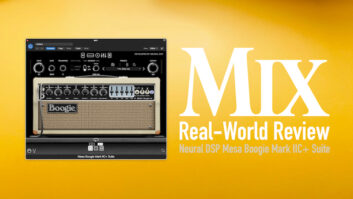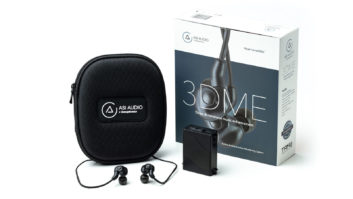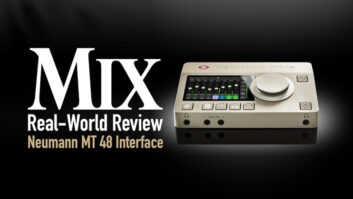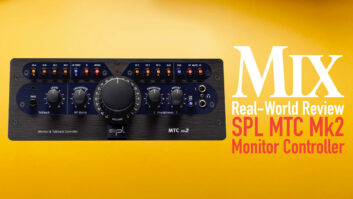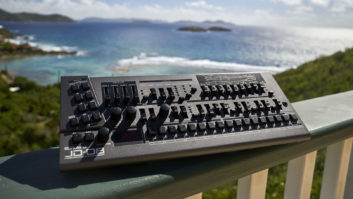I remember when the term “micro-monitor” equated restricted frequency response, minimal dynamics and very little SPL. We’ve gone from Auratones (which are actually quite useful because of the above limitations), to Avantones (modern self-powered “Auratones” that I find indispensable), to postmodern DSP-aided ultra-portable models like IK Multimedia’s much-lauded iLoud Micro Monitors.
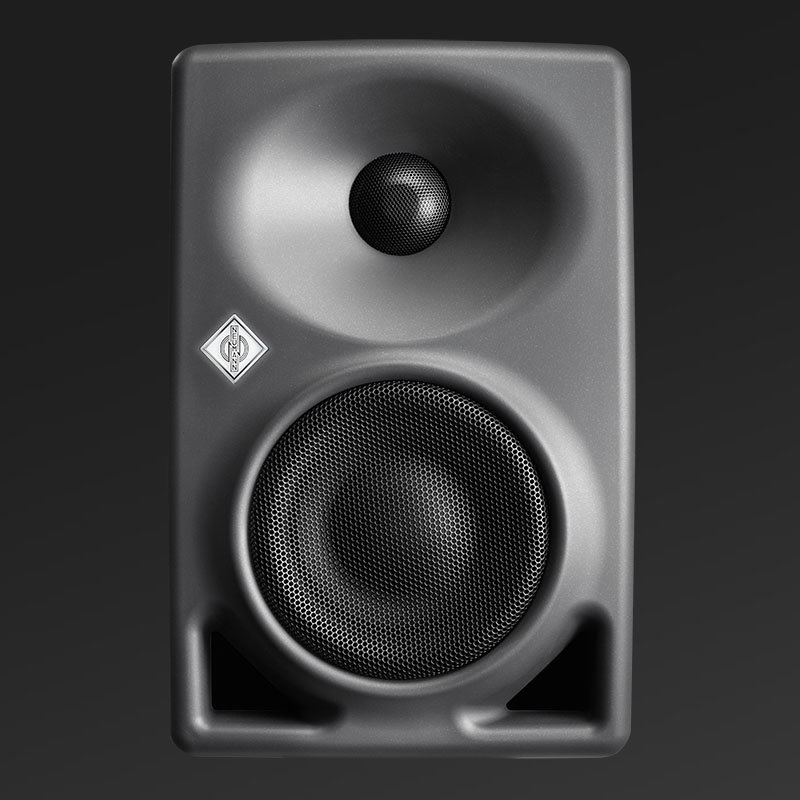
Well-implemented DSP can seemingly do miracles for such micro-monitors, but the world of broadcast requires more than the great performance we require for music production. For production trucks, edit bays and tiny offline edit rooms, small size is paramount, along with wall mounting, rack mounting, desktop use and modern networking requirements. It is in these areas that Neumann monitors and accessories rule the roost.
The KH80s utilize 4” composite sandwich woofers and 1” fabric alloy tweeters (a metallic cloth, I presume) housed in a composite polycarbonate cabinet. That cabinet features two front-panel ports, allowing wall mounting with optional mounting brackets. The woofer sports a sturdy metal protection grill that is tough despite being acoustically transparent, and the tweeter has an oval waveguide that is particularly suited to low-ceiling environments, as it minimizes “off the ceiling/console comb-filtered reflections.” Bi-amplified power provides 120W to the woofers, 70W to the tweeters (with THD + noise at 10%, drops to 70 and 50W at 0.1% THD + N). The digital crossover is placed at 1.8 kHz. Wisely, these “likely to be driven hard” monitors have advanced protection including soft-clip, peak and thermo limiters, as well as woofer excursion limiting.
KH80 top
KH80 front
Standby power mode is indicated by the backlit, three-color (on, standby or clip/error) Neumann logo, which is dimmable for behind-screen placement. Four output levels are offered, with a max short-term SPL of 93 dB and a long-term output of 88 dB (C-weighted with music material, not pink noise). Four levels of midrange reduction EQ are present for correcting placement issues with desktops and walls, providing eight bands of parameters EQ, plus high/low shelving via Neumann.Control software.
Input is via XLR jacks with attenuable level down to -15 dB. An Ethernet jack allows input from a network, with advanced features like lip sync delay and distance compensation delay. As if all that wasn’t enough, Neumann technicians hand-test each speaker and pair them accordingly for ideal matching.
Related: Neumann Bows Limited U 87 Rhodium Edition, by Strother Bullins, Pro Sound News, Sep. 18, 2017
Full disclosure: I’m quite a fan of Neumann monitors, and a pair of KH310As (with a sub) are my mid-field mains. I like those cabinets, the amplifiers, the controls and especially that tweeter, whose dispersion pattern makes a big difference in my low-ceilinged room. Placed alongside my mains, the KH80s looked excellent and immediately impressed me with excellent treble/tweeter performance and bass response that showed more note differentiation than other small-woofer models I’ve tried.
The only problem was a bit of cloudy lower-mids—a problem I find common with small-box designs that rely on DSP for bottom-end performance—but these 80s offer four levels of fine-tuning for those pesky low-mids, and I found the “large desk” setting to be just right. It cleaned up that cloudy area and revealed excellent midrange response that didn’t suffer from “crossover-point hollowness.” In fact, once I’d made all the adjustments for switching between monitor sets without level changes, I found these KH80s keeping up with their big brothers! These aren’t just for mixing voice; you can mix music on them!
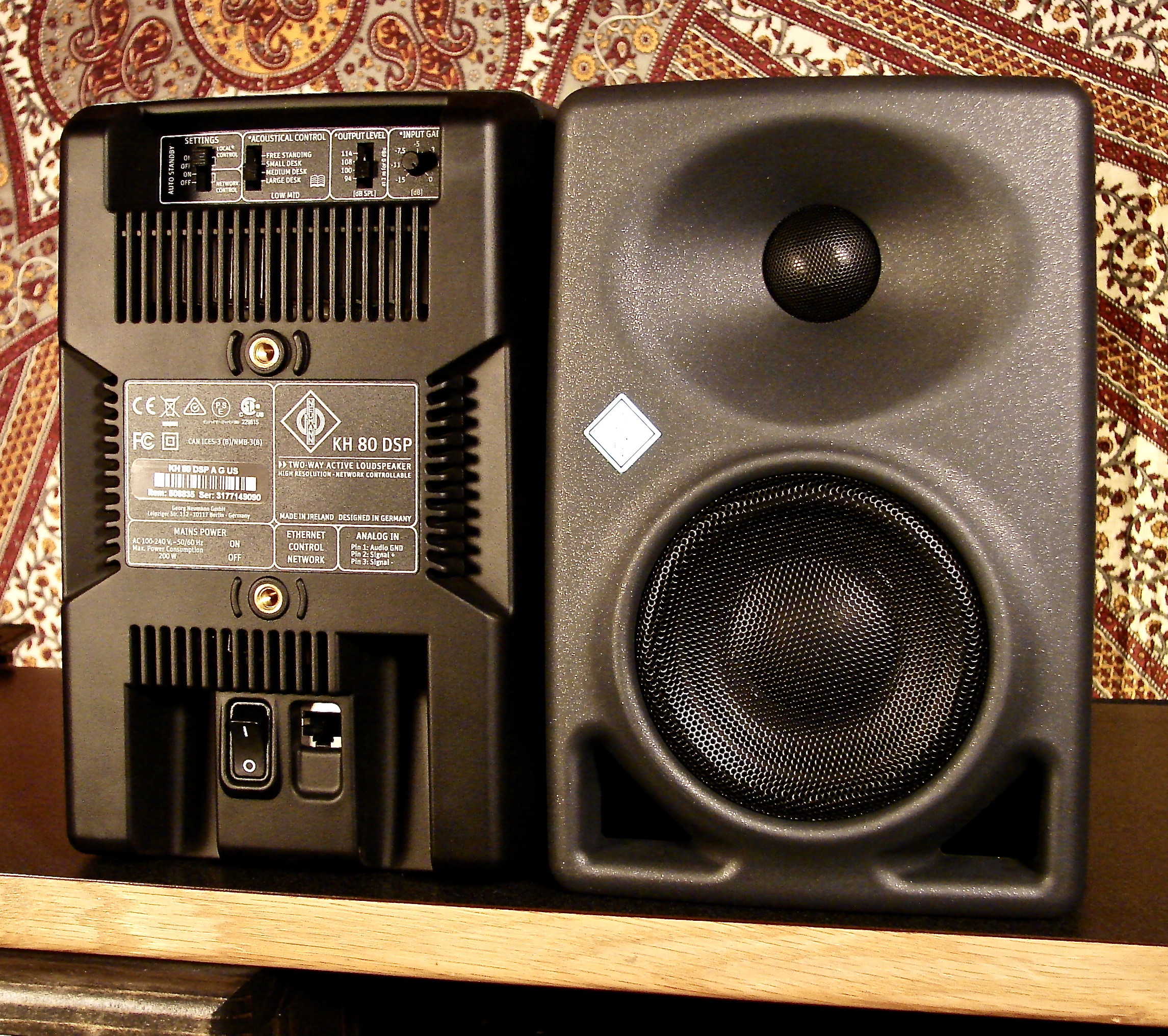
I drove the 80s hard—very hard—until I got uncomfortable, but they were still clean and not jumping with resonances. I finally got them to flash their overload indicator, though they were screaming at that point. There may not be enough power and dispersion to reach clients in the back of a big room, but there’s plenty to satisfy any one-person situation, whether that be bedroom, small control room or broadcast truck. I like to give my clients a ride in the sweet spot, and they all commented on these monitors. “I’m hearing the little speakers right now? You’re kidding me. Wow!”
Exhibiting at the NAB Show? Enter the NewBay Best of Show Awards! EXTENDED DEADLINE: MARCH 30!
Unfortunately, I didn’t find a way to get these little beauties into a production truck, or even on a network, where I estimate they would show even more of their advanced abilities. At press time, Neumann.Control software is not yet available, but it is expected to arrive in mid-2018; it will provide advanced alignment, calibration and fine-tuning options.
Related: Inside the V&A’s Pink Floyd Exhibition, by Mel Lambert, Pro Sound News, June 16, 2017
At right around $1K per pair at retail, these KH80 DSPs are hardly the most affordable of the micro-monitors out there today. They are, however, the most advanced, the most flexible, and quite likely the best sounding. The Neumann name is synonymous with microphones, but the truth of it is that it should be known for market-leading transducers at both ends of the audio chain.
Neumann • neumann.com
